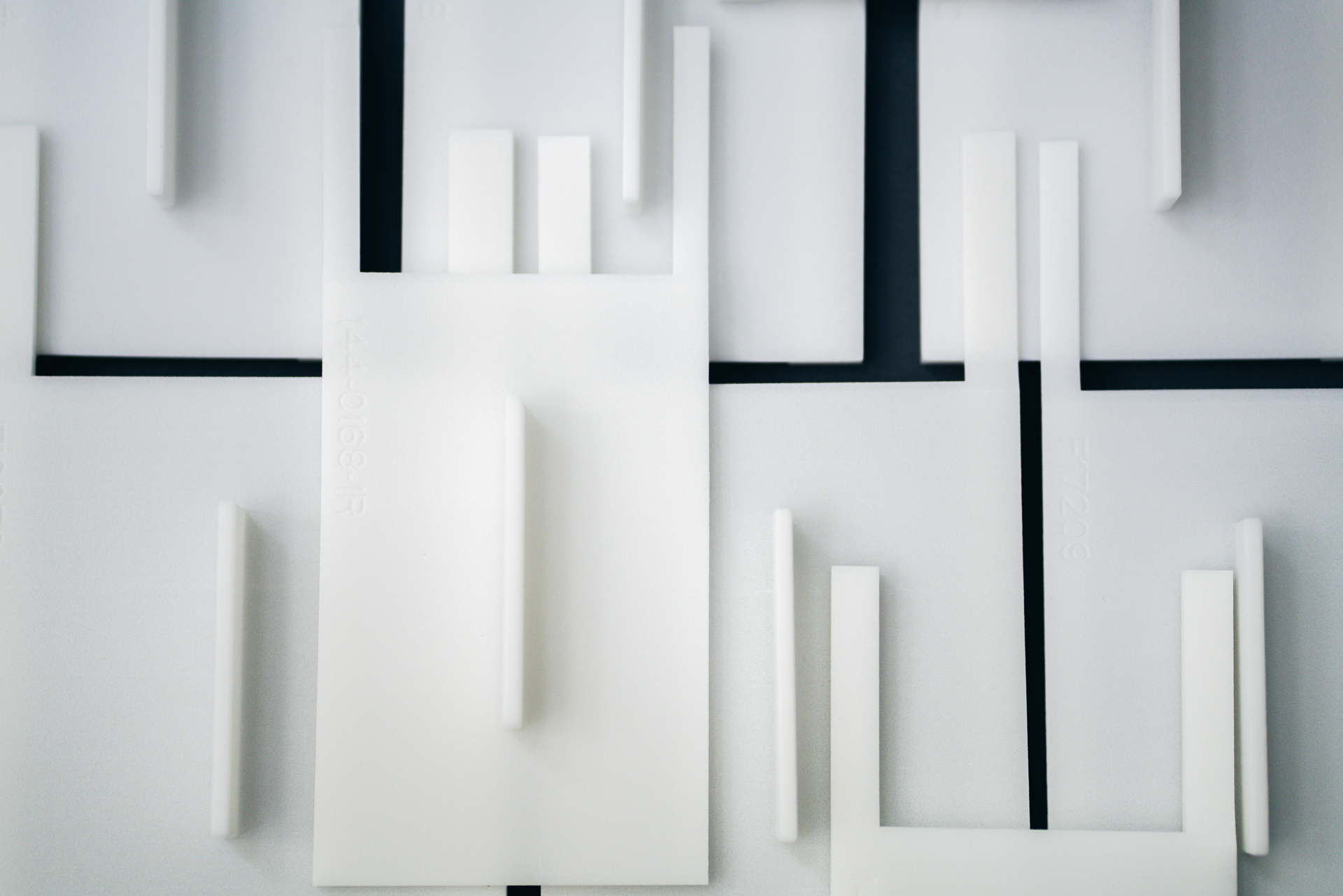If you ask us, the manufacturing industry should forget about expensive moulds, because nowadays industrial 3D printing produces a wide variety of plastic and metal components more swiftly, cost-efficiently and with higher quality than before. From prototypes to large production batches of end products and spare parts, 3D printing streamlines processes and gives more and more companies a clearer competitive advantage in the market.
3D printing is not just for intricate parts
3D printing as a technology has been around for a long time, but in the last five years, especially, it has really taken a leap forward. We would like to remind you at this point that amateur 3D printing is no match for industrial 3D printing. The equipment used in industrial 3D printing guarantees high-standard quality, precision and even the most intricate shapes.
>> Why did we decide to invest in new equipment? Read about it in our latest blog!
Is 3D printing for intricate components only? It’s true that 3D printing allows you to create even the most intricate geometric shapes, but you will also find 3D printed components in – places like Airbus’ turbo-jet engines – so, no, 3D printing is not just for intricate parts. It offers unlimited opportunities to any manufacturing company that uses plastic or metal in some way. So, what’s holding us up or preventing us from using it more?
In our experience, people still seem to think that 3D printing can only be used for highly complex applications, such as a space rocket fuel nozzle. This is one of the most significant deterrents in utilising the technology on a wider scale. In short, we already have all the technology and know-how we need to use it. This means the only obstacle to humanity’s technological advancement are people themselves. New technologies challenge designers to forget what they have learned and think beyond traditional production techniques.
3D printing compared to other production methods
The kind of production method you use affects not only the product or component you make but also, in a broader perspective, the short- and long-term costs. Indeed, 3D printing is often a more cost-effective, faster, and versatile technology than machining or injection moulding. Making metal components by machining is basically the opposite of 3D printing.
Not only do you have to purchase the raw materials to be machined, you also have to do the machining – this all costs money. The less you have to machine an aluminium cube, the lower the costs. Components produced by machining are, in practice, usually designed to be as simple as possible because more intricate shapes raise costs immediately.
The costs in 3D printing depend on the amount of material you use and the size of the component you make. The more material you use, the higher the production costs. The idea in 3D printing is to retain in the component only the material necessary for its core function. This means that, unlike in machining, complexity costs practically nothing in 3D printing. In fact, a component with an intricate shape may be less expensive to make than a simple shape if less material is needed to make it. 3D printing thus allows you to use precious metals even in final products and still allows you keep the costs reasonable.

Casting-based methods, such as injection moulding, are most often used in producing plastic components. The array of possible geometries the selective laser sintering (SLS) technology we use in 3D printing plastic is nearly unlimited. 3D printing thus makes it possible to create, without increasing costs, shapes and surfaces that are impossible to make with traditional production methods.
One of the most significant advantages of 3D printing compared to traditional production methods is being able to get rid of expensive moulds. Why order an expensive mould to make a batch of 5,000 components when it will be useless after production? It’s more worthwhile to simply use 3D printing. Creating moulds not only costs you money, but they also take time to make.
Naturally, there is a time and place for traditional production methods. However, we warmly recommend considering together with an expert whether industrial 3D printing would make your plastic and metal component production smoother, faster, more cost-efficient and produce higher quality components.
3D printing is, above all, a strategic choice
3D printing is already used in nearly all sectors, such as the automotive, aerospace, marine, textile and jewellery industries, the construction and pharmaceutical industries, metal and machine shops, and many other industries – even in the food industry, for example, in the production of packaging.
We strongly encourage companies to break out of their moulds, concretely and metaphorically, and to seriously think about their production. It’s worth taking a close look at your business, bit by bit, and considering whether there would be a stage in your production where 3D printing would really be a better option than a traditional production method. Consider your product’s entire lifecycle: could you replace a stage with 3D printing that would make it smoother, faster and better? Or could you use 3D printing to do things in a whole new way? 3D printing is suitable for many different types of companies and different parts can be manufactured very cost-effectively and quickly – even in large batches if necessary.
There may be a lot of hype, and thoughts may be soaring, but practical solutions are usually simple and easy. This is also the case with 3D printing. Would it now be your time to break out of the moulds?